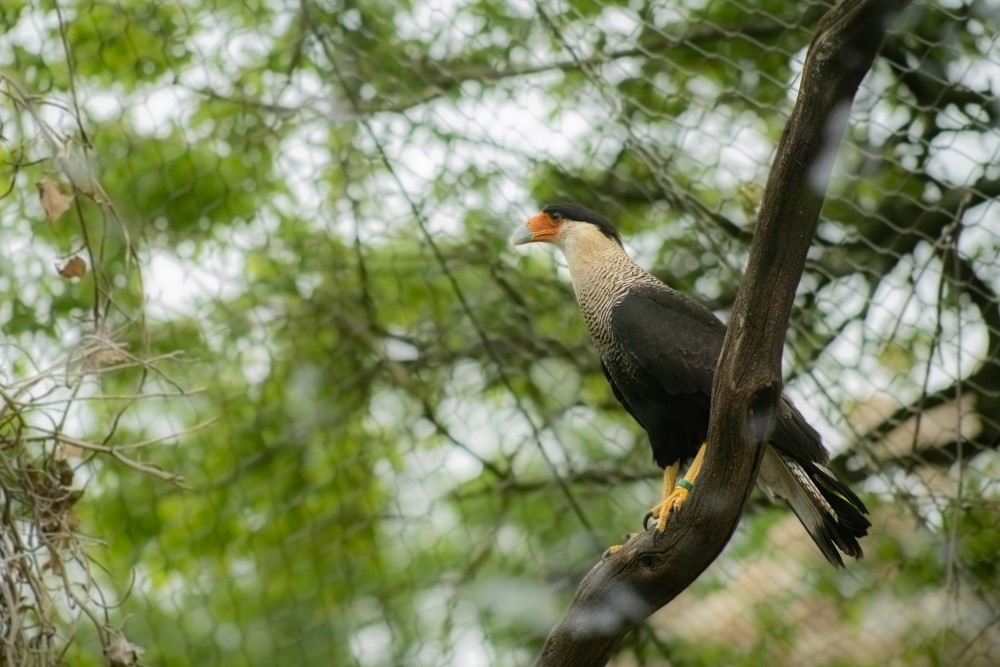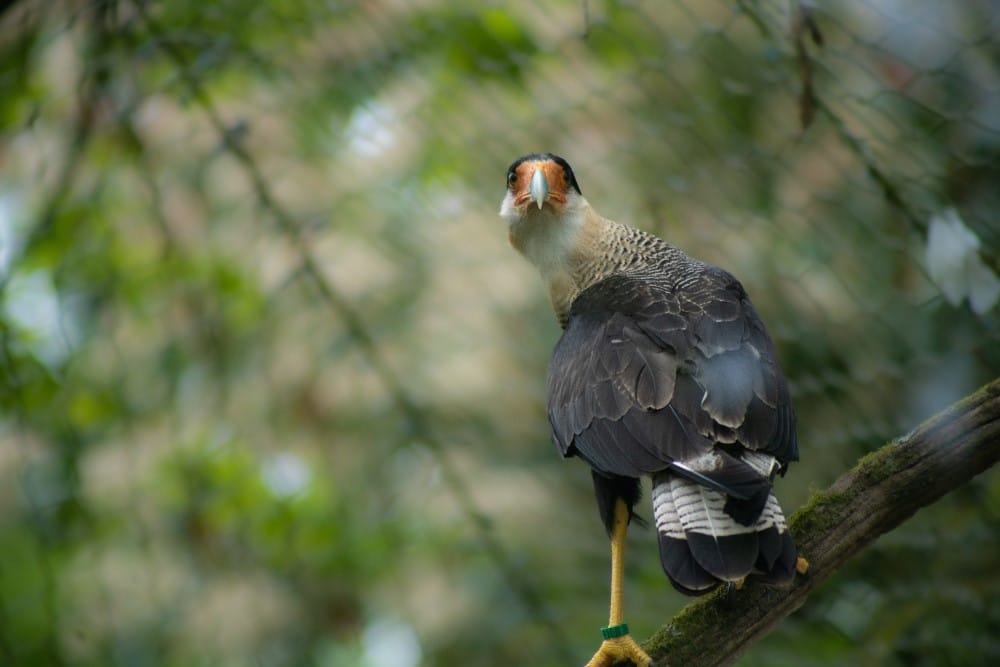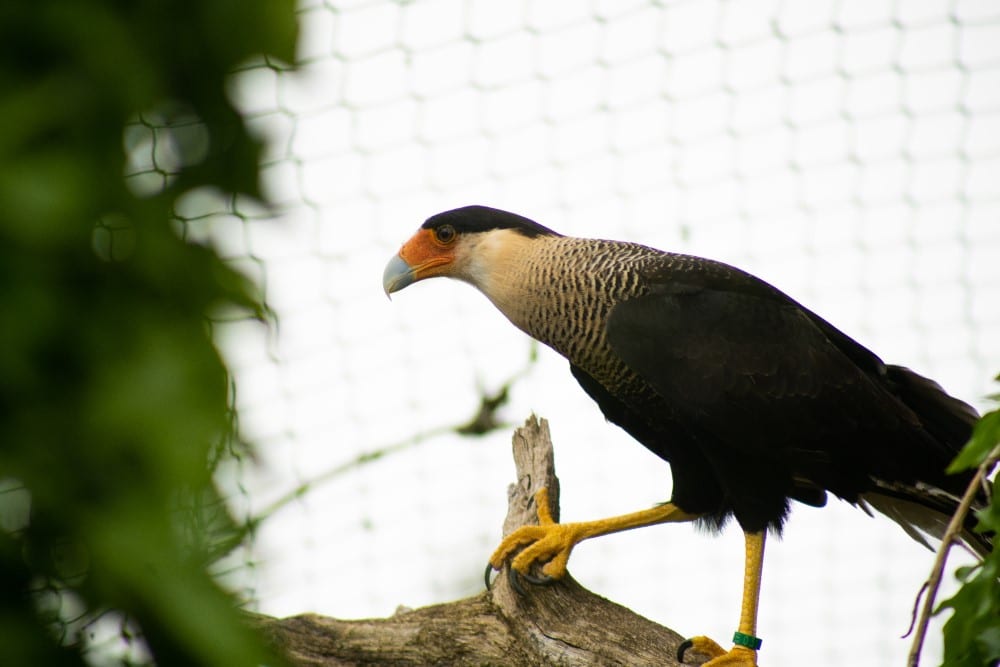Meet our new birds of prey!
May 26, 2023
May 26, 2023

Introducing our impressive new raptors, a pair of southern caracara, native to central and southern South America.
These highly opportunistic birds have a very diverse diet ranging from carrion and livestock carcasses to human refuse, carnivore faeces and live prey including birds and insects. The wingspan of these birds of prey is typically between 120 and 133cm with dark brown and white plumage.
They have an orange cere (the fleshy area at the top and sides of the beak that house nostrils) and long yellow legs and feet. Setting them apart from many of their close falcon relatives, they spend much of their time on the ground. They are strong runners because of their long legs and often pursue prey on the ground.
Guests will be able to find our intriguing new arrivals at the top of the park, just past Okapi playground where they are settling into their newly created enclosure.

“Southern caracara are a member of the falcon family found throughout a wide range of habitats across most of South America. They feed on carrion, as well as any living prey small enough for them to overpower.
“These versatile predators possess longer legs than other members of the falcon family, an adaptation that allows them to hunt on the ground in a manner that most other birds of prey cannot. They are also highly intelligent and exploit many resources to obtain food in the wild.
“At Marwell, we will be feeding our two caracara in a variety of ways to encourage them to display these diverse foraging behaviours, which means that they will be busy investigating their environment all throughout the day.”

In the wild these birds will often turn over small rocks and debris to find invertebrates such as insects, molluscs and arachnids. The birds team at Marwell has simulated this by inserting pipes into a rocky area close to the window. Food can be dropped down the pipes into the rocks inside the enclosure for the carcara to uncover.
Southern caracara are listed as being of Least Concern on the International Union for Conservation of Nature’s (IUCN) Red List of Threatened Species with numbers thought to be increasing. It is thought the increase in numbers can be attributed, in part, to deforestation, which has created more suitable habitat for caracara.